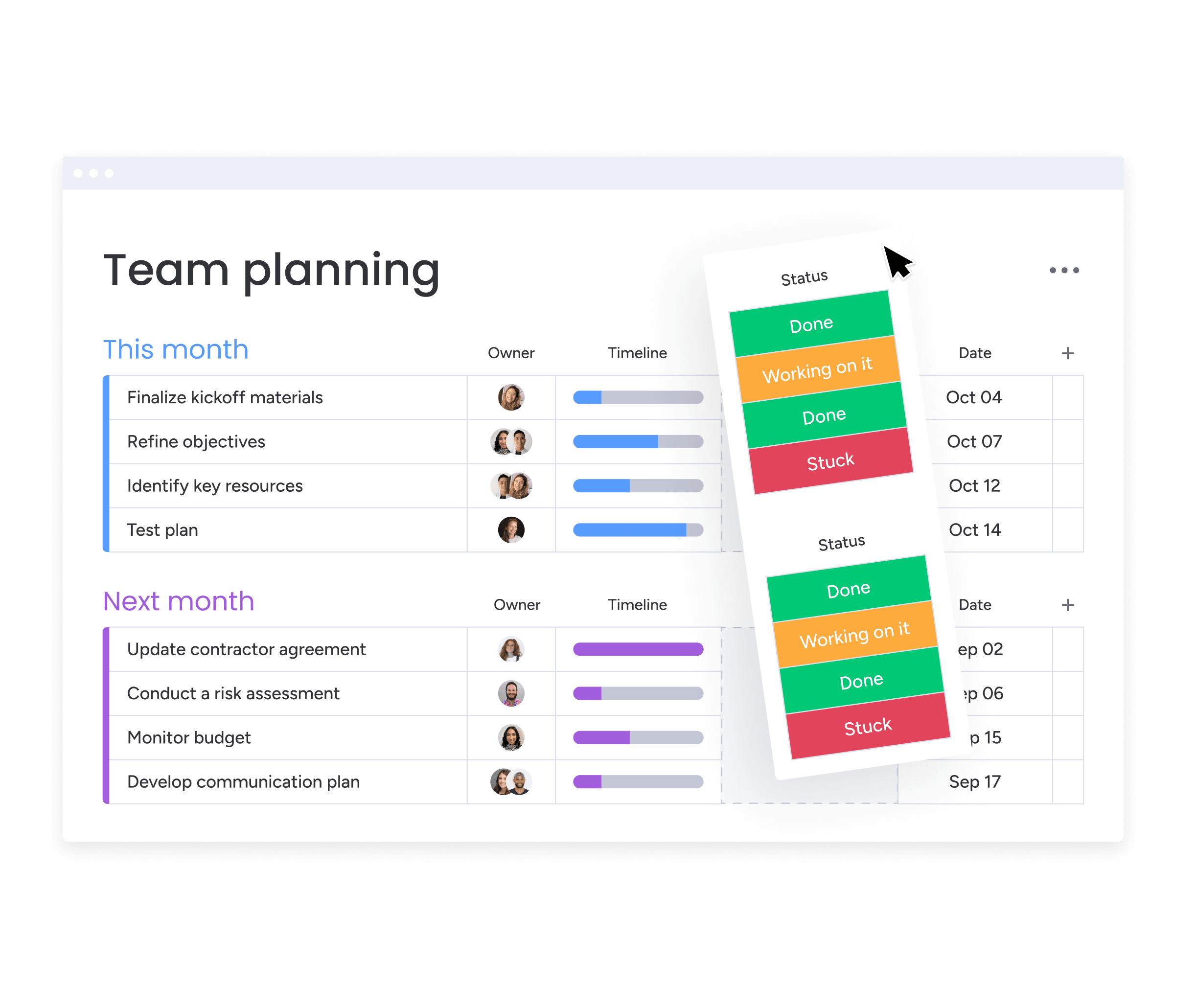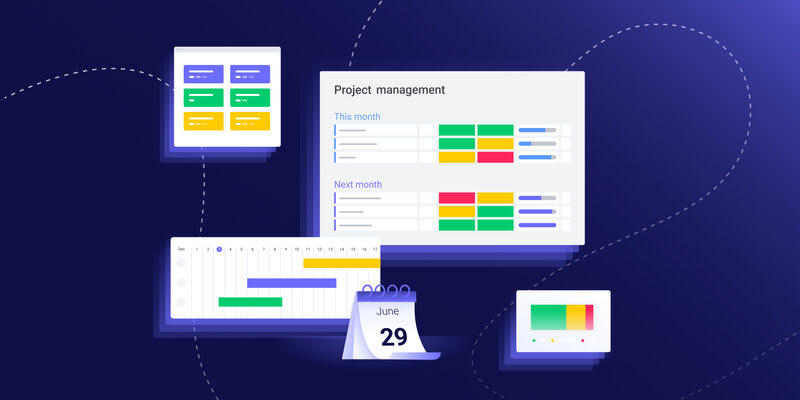
How to develop an effective work plan in minutes
In order to develop an effective work plan you'll need to clearly understand what you're trying to achieve. Ensuring a favorable outcome of a work plan often comes down to the manner in which you manage your goals and objectives, and how you measure success. A ready-made, customizable work plan template is an intelligent first step to reaching your goals.

What is a work plan?
A work plan represents the formal road map for a project. It should clearly articulate the required steps to achieve a stated goal by setting demonstrable objectives and measurable deliverables that can be transformed into concrete actions. An effective work plan serves as a guiding document, enabling the realization of an outcome through efficient team collaboration.
Prior to creating a detailed work plan, the preliminary stages might involve a meeting of key stakeholders and project sponsors. The first step is to establish a goal and determine some strategic ideas. This will facilitate the development of a broad general outline, identify some of the larger strategic considerations, and help define scope constraints. Brainstorming can often identify individual strategies and tactics to support the key objectives.
Prior to creating a detailed work plan, the preliminary stages might involve a meeting of key stakeholders and project sponsors. The first step is to establish a goal and determine some strategic ideas. This will facilitate the development of a broad general outline, identify some of the larger strategic considerations, and help define scope constraints. Brainstorming can often identify individual strategies and tactics to support the key objectives.
Goal
A goal defines what you are trying to achieve and represents the mission concept.
Strategy
Strategy defines the broad strokes that will help achieve that goal.
Objectives
Objectives are the measurable deliverables. Setting clear and realistic objectives can help prioritize and track the progress of the plan.
Tactics
Tactics represent the specific checklist of techniques employed to achieve the objectives.
Manage any plan or project
in an intuitive way with monday.com
in an intuitive way with monday.com

4 tips for creating a successful work plan
Prior to creating a detailed plan, the preliminary stages might involve a meeting of key stakeholders and project sponsors. The first step is to establish a goal and determine some strategic ideas. This will facilitate the development of a broad general outline, identify some of the larger strategic considerations, and help define scope constraints. Brainstorming can often identify individual strategies and tactics to support the key objectives.
Work your way backwards from the final goal
Planning activities can be accomplished by working backward from the final goal with core initiatives arranged hierarchically. Developing the plan can be achieved through iterative refinements of strategy, objectives and the underlying tactics. Gating factors should be accounted for in the development of a straw man outline. The main objectives and summary checklist should be included as the first step of the process.
Establish goals with measurable deliverables
Once the project outline is complete, it’s important to define clear realistic deliverables as part of the action plan. Milestones allow progress to be tracked against deliverables within a results-oriented framework. A timeline can be instrumental in identifying what needs to happen and when.
Create realistic objectives that are relevant to the stated goals
A good plan will often fan out from goal to tactic. For example, a single goal might be supported by a small number of strategies, each with a single or a small number of objectives. Objectives will often contain many tactics which should comprise the concrete actions to be accomplished within an achievable time frame. The more granular the tactical plan, the easier it will be to follow. Tasks can often be broken down into sub-tasks which represent individual units of work resulting in identifiable deliverables. As the project commences, it's important to track against the agreed-upon deliverables.
Define responsibilities and roles in the work plan
Allocating responsibilities among designated stakeholders with clearly assigned tasks is a key component of the operation plan. That way, all members of the team can function according to the team charter.
The final work plan represents a living document with all the required steps, deliverables and deadlines detailed. When the project commences, it’s important to monitor performance and periodically review the objectives stated in the tactical plan. Incremental progress can be tracked against objective indicators on a step by step worksheet.
Planning activities can be accomplished by working backward from the final goal with core initiatives arranged hierarchically. Developing the plan can be achieved through iterative refinements of strategy, objectives and the underlying tactics. Gating factors should be accounted for in the development of a straw man outline. The main objectives and summary checklist should be included as the first step of the process.
Once the project outline is complete, it’s important to define clear realistic deliverables as part of the action plan. Milestones allow progress to be tracked against deliverables within a results-oriented framework. A timeline can be instrumental in identifying what needs to happen and when.
A good plan will often fan out from goal to tactic. For example, a single goal might be supported by a small number of strategies, each with a single or a small number of objectives. Objectives will often contain many tactics which should comprise the concrete actions to be accomplished within an achievable time frame. The more granular the tactical plan, the easier it will be to follow. Tasks can often be broken down into sub-tasks which represent individual units of work resulting in identifiable deliverables. As the project commences, it's important to track against the agreed-upon deliverables.
Allocating responsibilities among designated stakeholders with clearly assigned tasks is a key component of the operation plan. That way, all members of the team can function according to the team charter.
186K+ customers worldwide manage work better with monday.com



















